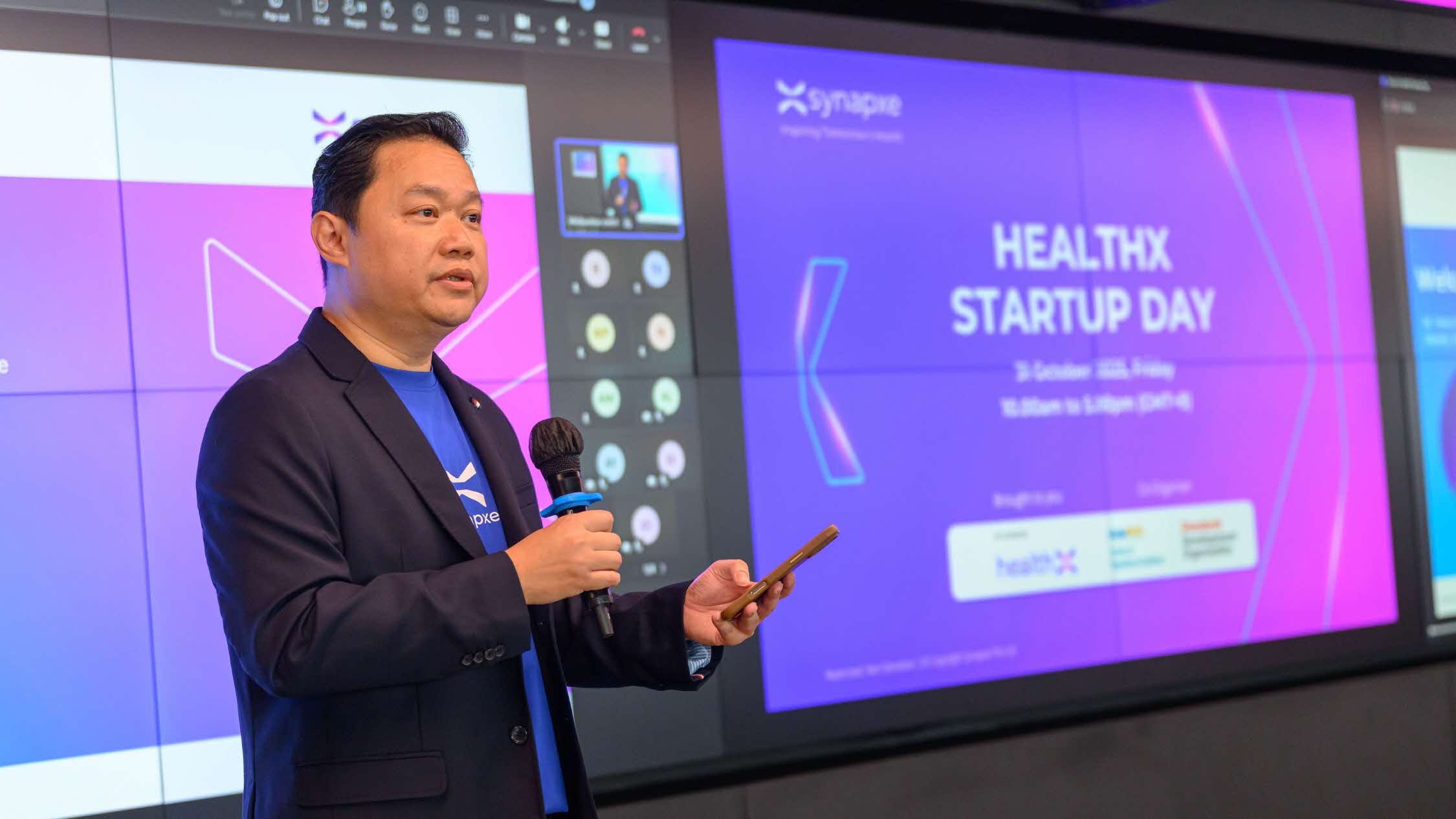
At Synapxe’s HealthX Start-up day on 31 Oct 2025, two new national standards were introduced, SS719:2025 and SS720:2025, to strengthen interoperability within the public healthcare system and support remote clinical monitoring. These standards are expected to accelerate the growth of healthtech startups. The SS719:2025 standardises how clinical data like patient information and lab results are structured and shared across healthcare providers while the SS720:2025 defines APIs to enable seamless data exchange for remote monitoring solutions, such as home-based hospital care programs. These standards aim to reduce integration costs, enhance data quality, and foster flexible, scalable healthcare services. Healthtech startups in Synapxe’s HealthX Innovation Sandbox 2.0 are adopting these standards to develop and test innovative medical technologies.
At the annual HealthX Startup Day held on Friday (October 31), Synapxe—Singapore’s national healthtech agency under the Ministry of Health—announced the launch of SS719:2025 and SS720:2025, developed in collaboration with the Centre of Regulatory Excellence Standards Development Organisation (CoRE-SDO) at Duke-NUS Medical School and Enterprise Singapore.
SS719:2025 is a terminology-based data standard that provides national guidance on how clinical information—such as patient demographics, diagnosis codes, lab results, and medication data—should be structured and exchanged across different healthcare systems.
The standard clearly defines data formats and terminologies applicable to both public and private healthcare providers. It integrates internationally recognised medical terminology and incorporates local standards, such as the Singapore Drug Dictionary, to suit the national healthcare context.
By increasing the adoption of clinical data standards and improving the quality of data exchange, Singapore aims to move toward a more coordinated and interconnected healthcare ecosystem.
With the growing adoption of remote clinical monitoring solutions, SS720:2025 aims to facilitate integration, particularly for initiatives such as the Mobile Inpatient Care@Home (MIC@Home) program, which enables patients to receive hospital-level care at home.
This standard defines Application Programming Interfaces (APIs) that allow remote monitoring solutions to record and transmit data in a standardised manner.
This reduces the complexity and cost of data integration, giving healthcare providers and patients greater flexibility in choosing remote monitoring solutions. It also enhances system interoperability and data quality, laying the foundation for scalable remote care programs.
Healthtech startups and innovators participating in Synapxe’s HealthX Innovation Sandbox 2.0 will adopt these two new standards in near real-world environments.
Launched on May 21 this year, the Sandbox 2.0 initiative supports the development of emerging health technologies by providing robust data and cloud infrastructure, as well as simulated environments for testing medical devices and digital health solutions integrated with electronic medical records.
Nine technology providers were selected to present their creative solutions to a panel of public healthcare professionals during the HealthX Startup Day. These solutions were developed in response to an open innovation call launched in September.
The call invited startups from Singapore and around the world to submit ideas under three themes: “Optimising surgical instruments for safer and more efficient procedures”, “reimagining staff rostering and leave coordination” and “improving patient triage methods”. Selected solutions may be further developed into deployable products.
